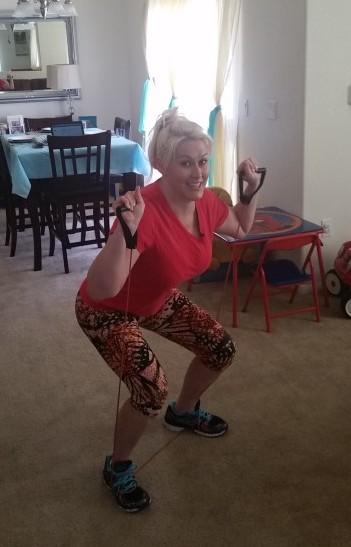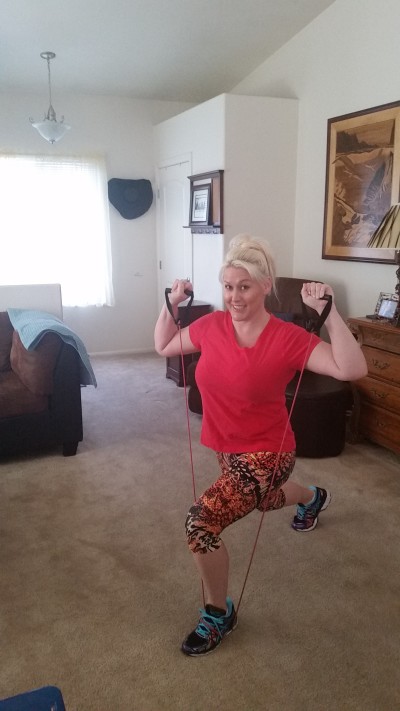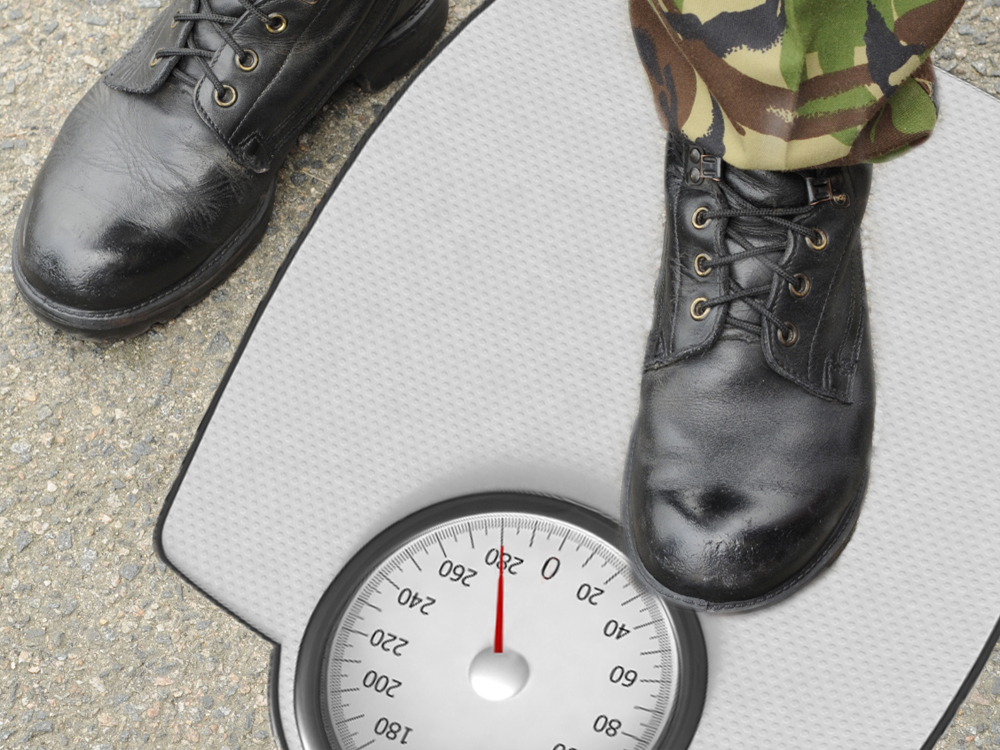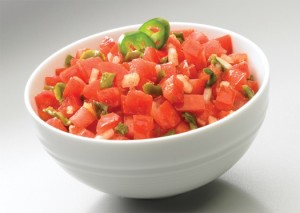Down 25 pounds since July 31st. Bikini Competition diet. Getting ready for my 6 week progress pics in 10 day
September 2, 2015
August 31, 2015
August 29, 2015
August 24, 2015
March 29, 2012
Fitness Tips: Back stretch helps tighten abs
Back Stretch Helps Tighten Abs
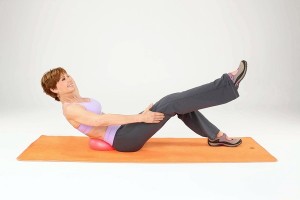
When it comes to training your abdominal muscles, it’s good to introduce new moves into your routine so you continue to “surprise” your muscles. Otherwise there’s a tendency for them to go on autopilot and you won’t get the maximum benefit of your efforts.
Sit upright on a flat, padded surface or mat with a small inflatable ball or firm pillow behind your waist. Place your feet hip-width apart with your knees bent and feet flat on the floor. To begin, place your left hand behind your head and your right hand behind your right thigh. On an exhalation, push your lower back against the ball and raise your right leg. Pause with your shin parallel to the ceiling.
Inhale as you roll back and extend your right leg. Remember to keep your abs contracted by pressing firmly against the ball or pillow. At first, just roll back halfway, and you don’t need to fully straighten your leg. Pause for 2 seconds, then exhale and roll back up to the start position. As you get stronger, place both hands behind your head and roll back a little more. Do 12 to 16 repetitions, then switch sides and repeat.
March 28, 2012
March 24, 2012
Army Steps Up Efforts to Get New Troops Fit
Shape Up, Soldier!
Soldiers can still find pancakes on the chow line at the U.S. Army’s Fort Leonard Wood training facility in Missouri. But now they’re made with whole-grain batter — adding more fiber and protein.
The new focus on nutrition is part of a ‘Fueling the Soldier’ initiative that aims to teach soldiers to make healthier choices during military training and in combat.
“The Army must treat our soldiers as tactical athletes to improve not only physical training but also trying to get them to adapt the right nutritional aspects to help prepare them for the battlefield and for their life,” Lt. Gen. Mark Hertling said in a statement.
Hertling is overseeing an overhaul of physical readiness training. In fact, the Army is tossing out the old training manuals, and taking a new approach to basic training.
Gone are the long endurance runs, which officials say can lead to injuries in new recruits who aren’t accustomed to the mileage.
Instead, soldiers will be coached by trainers to do a whole range of exercises that build core strength, flexibility and endurance. Training will be tailored to a soldier’s level of fitness.
A new cafeteria Fort Leonard Wood was also unveiled today. As soldiers walk down the cafeteria line, they see foods marked with red, yellow or green labels.
Green marks high-performance foods, and posters nudge the soldiers to “Go For Green” frequently.
In addition, the cooks have turned off fryers and started baking more entrees. They’re also adding lots of ‘nutrient-dense’ menu options made from fresh food.
To help reinforce these messages, drill sergeants will give one-hour courses in “performance nutrition.” Maybe Shots can invite them over for dinner with our kids?
Why the change in approach? Well, army recruits mirror the general population, which is trending toward the ‘heavier’ side—to put it politely.
More than 9 million Americans of prime recruiting age are too heavy to join up, according to Mission: Readiness, a group of retired senior military officials pushing for better fitness for young people.
Enlisted men and women are no exception. A 2008 Department of Defense survey found that 38 percent of people enrolled in the military health system were overweight or obese.
The new training plan incorporates physical therapists and sports trainers at the unit level to promote proper techniques and injury prevention
If you’d like to see how the Army is putting its soldier-as-athlete model into action, you can download a free iPhone app called “Army Physical Readiness Training.” It was developed by programmers at the U.S. Army Center of Excellence at Fort Gordon, Ga.
The Army plans to make the changes at its other training installations in Fort Sill, Okla.; Fort Benning, Ga.; Fort Jackson, S.C.; and Fort Knox, Ky. in the coming months
—
Original Article from NPR Health
March 23, 2012
Low-Fat Beats Low-Carb For Heart Health
For people at risk for hypertension, reducing fat intake may be key to protecting the heart. According to a study published in the American Heart Association’s journal Hypertension, a low-fat diet is more effective than a low-carbohydrate diet in reducing the risk of developing hypertension, a precursor to cardiovascular problems such as atherosclerosis.
When the two types of diets were compared in apparently healthy participants, the low-fat diet was the winner at improving blood pressure markers, such as blood flow in the arteries. This led the researchers to conclude that low-fat diets “may confer greater cardiovascular protection” than low-carb diets.
—
source: IDEA Fitness
March 22, 2012
Hot Salsa Tip
Did you know that salsa has surpassed ketchup as America’s favorite condiment? Salsa can spice up all kinds of bland meals. Stir in a jar of your favorite salsa to add some zing to a pot of kidney, white, pinto, red or black beans; then top with a dollop of sour cream for a unique, high-fiber side dish.
March 21, 2012
How to Stop Yourself Eating from Boredom
 People who struggle with their weight are often prone to “emotional eating”, consuming food as a response to mental triggers rather than physical hunger. Often, dieters fail to lose weight not because their diet plan itself is flawed, but because they are knocked off course by feeling stressed, tired, upset or bored.
People who struggle with their weight are often prone to “emotional eating”, consuming food as a response to mental triggers rather than physical hunger. Often, dieters fail to lose weight not because their diet plan itself is flawed, but because they are knocked off course by feeling stressed, tired, upset or bored.
The last of these is an especially common cue for many people to eat. For some, it’s a habit learned in childhood (“I’m bored, mum!” – “Run down to the shop and buy yourself a candy bar, then.”) For others, it’s a reaction to the dull parts of adult life: munching on biscuits while rocking the baby to sleep, or getting yet another handful of chocolates because the afternoon is really dragging at work.
Avoid Snacking When You’re Bored
When you find yourself thinking, “I’m bored, maybe I’ll have a cookie,” then get straight out of that mindset:
- If you’re genuinely hungry, have some fruit or a small sandwich.
- Cravings can be beaten, just by sitting them out. Force yourself to wait 20 minutes before getting that snack, and nine times out of ten, you’ll no longer want it.
- Find something to do – ideally, an activity that makes it hard to eat at the same time.
Understanding Your Danger Points
Keep a food diary for a couple of weeks, and write down not only what you ate and when, but why you ate. (Hunger, because friends were eating, because it was lunch-time, boredom, stress..?)
When are you most likely to eat from boredom? Maybe it’s when you have to hang around at home, waiting for a delivery. Or perhaps it’s when you get in from work and you’re waiting for your partner to come home. Once you’ve figured out the pattern, work out how to change it!
- Find a hobby or interest to occupy you, if you’ve got too much time on your hands
- Use those “hanging around” moments, to blitz through all the little jobs you keep putting off (cleaning the oven, anyone?)
- If you’re regularly twiddling your thumbs at work, see if there’s a stressed colleague who could use your help.
What are your tips for avoiding boredom-induced snacking?
—
Article courtesy of: diet-blog
Image courtesy from: Tony Jalicea
